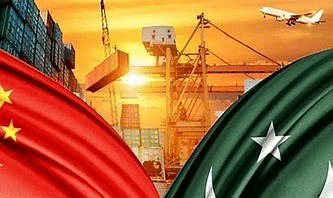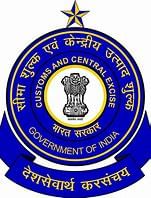UPSC Daily Current Affairs- 7th June 2024 | Current Affairs & Hindu Analysis: Daily, Weekly & Monthly PDF Download
GS-I/History and Culture
Mohiniyattam Dance
Source: India Times

Why in News?
A popular Mohiniyattam dancer in Kerala was refused bail against her alleged casteist remarks against the SC community.
About Mohiniyattam
| Description | |
| Name Meaning | Mohini – female enchantress avatar of Vishnu; Aattam – rhythmic motion or dance (Malayalam) |
| Roots | Natya Shastra, ancient Hindu Sanskrit text on performance arts |
| Style | Lasya Style – delicate, eros-filled, and feminine |
| Performers | Traditionally women, but men also perform in contemporary times |
| Music | Includes Carnatic music, singing, and enactment of plays through dance |
| Language | Manipravalam: a Malayalam-Sanskrit hybrid |
| Posture | Parted feet, gentle swaying of body, soft footwork synchronized with music beats |
| Gestures | Follow the classical text of Hastha Lakshanadeepika with elaborate mudras (hand gestures) |
| Costumes | Plain white or off-white sarees with golden brocade, pleated sheets for freedom of movement, adorned with jewellery |
| Accessories | Jewellery on fingers, wrists, neck, and ears, ankle bells (for female performers), dhotis and similar accessories (for male performers) |
| Makeup | Natural with brilliant red lips, tikka (Gobi) on the forehead, lined eyes |
| Music | Various rhythms and compositions in Manipravalam, accompanied by instruments like Mridangam, Idakka, flute, Veena, and Kuzhitalam |
| Ragas | Rendered in the Sopana Style, a slow melodic style rooted in the Natya Shastra |
GS-II/Polity and Governance
The representation of women in the incoming Lok Sabha, how it compares to previous years
Source: Indian Express

Why in News?
Over time, there has been a general inclination towards enhancing women’s representation in the Lok Sabha. However, the advancement has been gradual and inconsistent.
Women in Lok Sabha 2024 (PRS data):
- Number of Women MPs: India has elected 74 women MPs to the Lok Sabha in 2024, which is four fewer than in 2019.
- Percentage of Representation: Women MPs make up just 13.63% of the elected strength of the Lower House.
- Party-wise Distribution: Women MPs come from 14 different parties, with the BJP leading with 31 women MPs, followed by the Congress with 13.
Different Demographic Observations:
- Trend in Representation: Over the years, there has been a slow and non-linear increase in women’s representation in the Lok Sabha.
- Historical Trends: Women’s representation started at 4.41% in 1952 and peaked at 14.36% in 2019.
- New Faces: Out of the 74 women MPs elected, 43 are first-time MPs, indicating a higher percentage of newcomers compared to the overall House.
- Younger Representation: The average age of women MPs is 50 years, younger than the overall House age of 56 years.
Comparison with Other Countries:
- International Comparison: India lags behind several countries in terms of women’s representation, with countries like South Africa, the UK, and the US having higher percentages of women MPs.
- Global Rankings: Women make up 46% of MPs in South Africa, 35% in the UK, and 29% in the US.
What Needs to Be Done?
- Increase in Representation: There is a need for greater efforts to increase women’s representation in the Lok Sabha to achieve gender parity.
- Policy Measures: Implementation of policy measures such as reserving seats for women in the Lok Sabha could help improve representation.
- Encouraging Participation: Encouraging more women to enter politics and providing support for their political careers can contribute to greater representation.
- Education and Awareness: Promoting education and awareness about the importance of gender equality in politics is essential for fostering a more inclusive political environment.
GS-II/International Relations
Second Phase of China-Pakistan Economic Corridor (CPEC)
Source: Indian Express

Why in News?
Pakistani PM is on a formal visit to China to attend the formal announcement of the second phase of the China-Pakistan Economic Corridor (CPEC-II).
About CPEC-II
- CPEC’s next phase shifts focus from infrastructure and energy to sectors like agriculture, Pakistan Railways’ Main Line-I (ML-1) upgrade, and realignment of the Karakorum Highway.
- CPEC was initiated in 2015 as part of President Xi Jinping’s Belt and Road Initiative (BRI).
Why CPEC-II?
- It will provide Pakistan with a strategic advantage in terms of trade and commerce
- CPEC-II includes significant investments in the energy sector, which will help overcome Pakistan’s chronic power shortages and ensure a stable supply of electricity
- Provides a shortcut for China’s access to the Persian Gulf to secure oil imports, and
- Stimulate industrial and economic activity in Pakistan.
Belt and Road Initiative (BRI)
Global Strategy: The Belt and Road Initiative (BRI), initially named One Belt One Road, is a global infrastructure development plan launched by the Chinese government in 2013.
Wide Reach: The BRI aims to invest in nearly 70 countries and various international organizations.
Infrastructure Focus: Key infrastructure projects under the BRI include the development of ports, railways, highways, power stations, aviation facilities, and telecommunications networks.
Two Main Routes:
- Silk Road Economic Belt: This refers to the overland routes designed for road and rail transportation.
- 21st Century Maritime Silk Road: This encompasses the sea routes for maritime trade and transport.
Long-term Vision: The initiative has a completion target set for 2049, aligning with the 100th anniversary of the founding of the People’s Republic of China.
India’s Concerns
- Sovereignty Concerns: India expresses reservations as CPEC traverses through Pakistan-occupied Kashmir (PoK), challenging territorial sovereignty and potentially bolstering Pakistan’s claim over the region.
- Geostrategic Implications: The expansion of Gwadar port under CPEC extends China’s “String of Pearls” around India, prompting concerns over regional power dynamics.
CPEC’s Progress so Far
- Mixed Outcomes: The initial phase of CPEC primarily addressed infrastructure, energy, and port development projects, with progress showing variations.
- Project Status: While several power projects have been completed, significant delays and challenges persist in transport-related projects and Special Economic Zones (SEZs).
Challenges and Roadblocks
Slow Development: Gwadar, although central to multibillion-dollar projects, struggles with basic needs such as reliable water and electricity supply, along with other essential services.
Baloch Freedom Movement: The ongoing Baloch freedom movement poses a significant obstacle to project progress, with Chinese officials being targeted and killed.
Security Concerns: There is a consistent security threat, leading China to consider deploying its army to protect CPEC projects, a proposal met with resistance from Pakistan.
GS-III/Economy
Regulator SEBI expands promoter definition for IPO-bound companies
Source: Business Line

Why in News?
SEBI expands promoter definition for IPO-bound companies, including founders holding 10% or more, and their immediate relatives.
- According to current SEBI regulations, a promoter is someone who controls the affairs of the company or can appoint the majority of directors or is named as such in an offer document.
What Norms Say
- Expanded Definition of Promoter: The definition of a promoter has been expanded for companies preparing for an IPO. A promoter is someone who controls the company’s affairs, can appoint the majority of directors, or is named as such in an offer document.
- Previous Criteria: Founders holding 25% were previously deemed promoters due to their negative control and power to block special resolutions.
- New Criteria: Founders holding 10% or more must classify themselves as promoters if they are key managerial personnel (KMP) or directors in the company. Immediate relatives on the company board or KMP will also be classified as promoters, even if they hold just 1%.
About Declassification and 31A of LODR (Listing Obligations and Disclosure Requirements) Regulations
- Declassification Difficulty: The current regulations do not provide an easy path for declassifying a promoter as a public shareholder.
- Rule 31A of LODR Regulations: To be declassified, a person must not hold more than 10% in the listed company along with their relatives.
- Restrictive Nature: This restrictive rule makes declassification almost impossible for immediate relatives who are classified as promoters by virtue of their relationship, especially problematic for married daughters with no active role in the company.
Issue Over Subjective Definition
- Subjective Definition: The definition of a promoter has been historically subjective, causing varying interpretations and legal disputes.
- Court Rulings: Multiple court rulings have addressed this subjectivity, highlighting inconsistencies and complexities in identifying a promoter.
- Complex Criteria: The criteria set by accounting standards and regulatory bodies for determining control and influence within a company are intricate and open to multiple interpretations.
- Need for Objectivity: Experts advocate for a more objective approach to determine control and promoter status, aiming to provide clearer guidelines and reduce disputes.
- Expert Opinion: Vinod Kothari, Director at Vinod Kothari Consultants, supports the move towards an objective test, emphasizing its importance due to the current complexities in defining control.
Way forward:
- Standardised Guidelines: Develop clear and standardised guidelines for identifying promoters, reducing subjectivity and ensuring consistency.
- Detailed Disclosures: Mandate detailed disclosures from companies about their promoters, including shareholding patterns, roles, and influence in decision-making.
GS-III/Science and Technology
Placental Mammals
Source: Frontiners

Why in News?
New research from Stockholm University shows that the typical mammalian heater organ, brown fat, evolved exclusively in modern placental mammals.
About Placental Mammals
Definition: Placental mammals are animals that possess a placenta.
Placenta Function:
- Composition: The placenta is a vascular organ formed during gestation, made up of both maternal and fetal tissues.
- Role: It transports nutrients from the mother to the fetus and eliminates fetal waste products.
Gestation and Birth:
- Placental mammals carry their fetuses in the uterus until they are born at an advanced stage.
- The placenta provides nourishment and oxygen to the fetus, enabling a long period of fetal growth in the uterus.
Fetal Development: The extended gestation period allows the fetus to become large and mature before birth.
Classification:
- Placental mammals are classified under the subclass Eutheria.
- There are approximately 4,000 identified species of placental mammals.
Evolution: Fossil evidence indicates that placental mammals evolved between 163 million and 157 million years ago during the Jurassic Period.
Exclusivity:
- Placental mammals include all living mammals except for marsupials and monotremes.
- Marsupials and monotremes have a less-developed, less-efficient placenta, resulting in a shorter gestation period.
What are Marsupials?
Definition: Marsupials are a group of mammals known for giving birth to relatively undeveloped young, which continue to grow and develop outside the womb, typically in a pouch.
Placenta Function:
- Marsupials have a short-lived placenta that nourishes their young for only a few days before birth.
- After birth, the young receive nutrition from the mother’s teats inside the pouch.
Anatomical Feature: Marsupials possess an extra pubic bone called the epipubic bone, which supports their pouch.
Species Distribution:
- There are over 330 species of marsupials.
- About two-thirds of them live in Australia, with the rest primarily in South America.
Examples: Common examples of marsupials include kangaroos, koalas, and opossums.
GS-II/Polity and Governance
World Wealth Report 2024
Source: Money Control
 Why in News?
Why in News?
The number of high-net-worth individuals (HNWI) in India increased by 12.2% in 2023 compared to 2022 as per the Capgemini Research Institute’s World Wealth Report 2024.
About World Wealth Report 2024
Release Information:
- Published by: Capgemini Research Institute
- Coverage: Includes data from 71 countries, accounting for over 98% of global gross national income and 99% of world stock market capitalization.
Key Highlights:
Global Wealth and Population Growth:
- HNWI Wealth Growth: Global high-net-worth individuals (HNWI) saw their wealth grow by 4.7% in 2023, reaching $86.8 trillion.
- HNWI Population Growth: The HNWI population increased by 5.1%, totaling 22.8 million globally.
HNWI Definition:
- HNWIs are defined as individuals with investable assets of $1 million or more, excluding their primary residence, collectibles, consumables, and consumer durables.
- Wealth Bands:
- Ultra-HNWIs: $30 million or more.
- Mid-Tier Millionaires: $5-30 million.
- Millionaires Next Door: $1-5 million.
Performance in APAC Region:
- India:
- HNWI wealth growth: 12.4%.
- HNWI population growth: 12.2%, totaling 3.589 million.
- Financial wealth increased to $1,445.7 billion in 2023 from $1,286.7 billion in 2022.
- Unemployment rate decreased to 3.1% in 2023, down from 7% in 2022.
- Market capitalization increased by 29.0% in 2023, up from 6% in 2022.
- National savings as a percentage of GDP rose to 33.4% in 2023, compared to 29.9% in 2022.
- Australia:
- HNWI wealth growth: 7.9%.
- HNWI population growth: 7.8%.
- India:
Drivers of Growth:
- Economic Resilience: Both India and Australia exhibited a resilient economy.
- Equity Market Performance: Robust performance in equity markets contributed to the wealth growth.
GS-II/Polity and Governance
Central Board of Indirect Taxes and Customs (CBIC)
Source: The Print

Why in News?
The Central Board of Indirect Taxes and Customs (CBIC) has invited suggestions on the draft ‘Central Excise Bill, 2024’ from stakeholders.
About Central Board of Indirect Taxes and Customs (CBIC)
Overview:
- Part of: Department of Revenue, Ministry of Finance, Government of India.
- Previous Name: Formerly known as the Central Board of Excise and Customs.
- Primary Role: Administers all indirect tax-related matters in India.
Responsibilities:
- Policy Formulation: Involves the creation of policies related to the levy and collection of:
- Customs duties
- Central Excise duties
- Central Goods & Services Tax (CGST)
- Integrated Goods & Services Tax (IGST)
- Smuggling Prevention: Engages in measures to prevent smuggling.
- Tax Administration: Manages matters related to Customs, Central Excise, CGST, IGST, and certain aspects of Narcotics.
- Policy Formulation: Involves the creation of policies related to the levy and collection of:
Subordinate Organizations:
- Administrative Authority: Oversees Custom Houses, Central Excise and Central GST Commissionerates, and the Central Revenues Control Laboratory.
- Tax Collection on Travel: Ensures taxes on foreign and inland travel are collected and deposited to the public exchequer as per the law.
Customs Duty Collection:
- Administers the collection of customs duty at various points including:
- International Airports
- Seaports
- Custom Houses
- International Air Cargo Stations
- International Inland Container Depots (ICDs)
- Land Customs Stations
- Special Economic Zones (SEZs)
- Container Freight Stations (CFSs)
- Administers the collection of customs duty at various points including:
Organization Structure:
- Leadership: Headed by a Chairman appointed by the Indian Government.
- Divisions and Zones: The organization is divided into various divisions and zones, each led by a Chief Commissioner or Director General.
- GST Intelligence Wing: A specialized wing within CBIC responsible for detecting and preventing tax evasion.
GS-III/Science and Technology
Standard Missile 6 (SM-6)
Source: News Week

Why in News?
The US SM-6 missiles are hogging the headlines again after photographs of a US Navy F/A-18 Super Hornet appeared carrying an air-launched variant of the SM-6, or the RIM-174 missile.
About Standard Missile 6 (SM-6)
Overview:
- Type: Multi-mission missile.
- Roles: Capable of anti-air warfare, terminal ballistic missile defense, and anti-ship strike roles.
- Developer: Raytheon Company, a major U.S. defense contractor.
- Primary User: United States Navy.
- Operational Date: The first version became operational in December 2014.
Features:
- Versatility: The SM-6 is the first missile with anti-air, anti-surface, and sea-based terminal defense capabilities.
- Dimensions:
- Length: 6.6 meters.
- Diameter: 0.5 meters.
- Weight: 1,500 kg.
- Warhead: Carries a 64 kg blast fragmentation warhead.
- Technology:
- Type: Extended-range active missile (ERAM).
- Guidance Systems: Utilizes sophisticated signal processing and guidance technologies derived from the AMRAAM (Advanced Medium-Range Air-to-Air Missile).
- Homing Guidance: Employs both semi-active homing and active homing guidance for accurate target engagement.
Capabilities:
- Surface-to-Air Range: Published range of 240 km.
- Extended Range: Estimated ranges up to 463 km.
|
61 videos|5403 docs|1144 tests
|
















